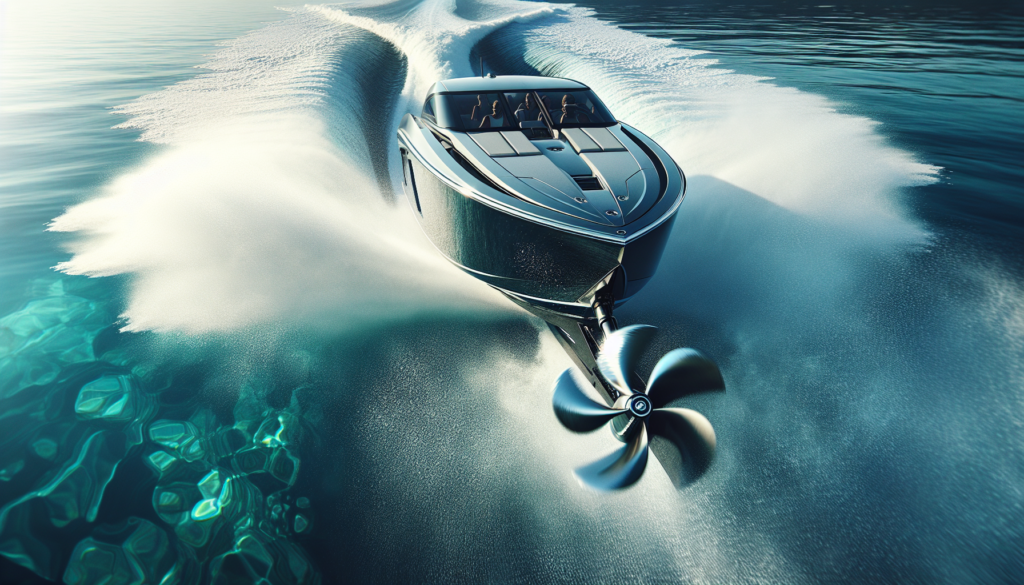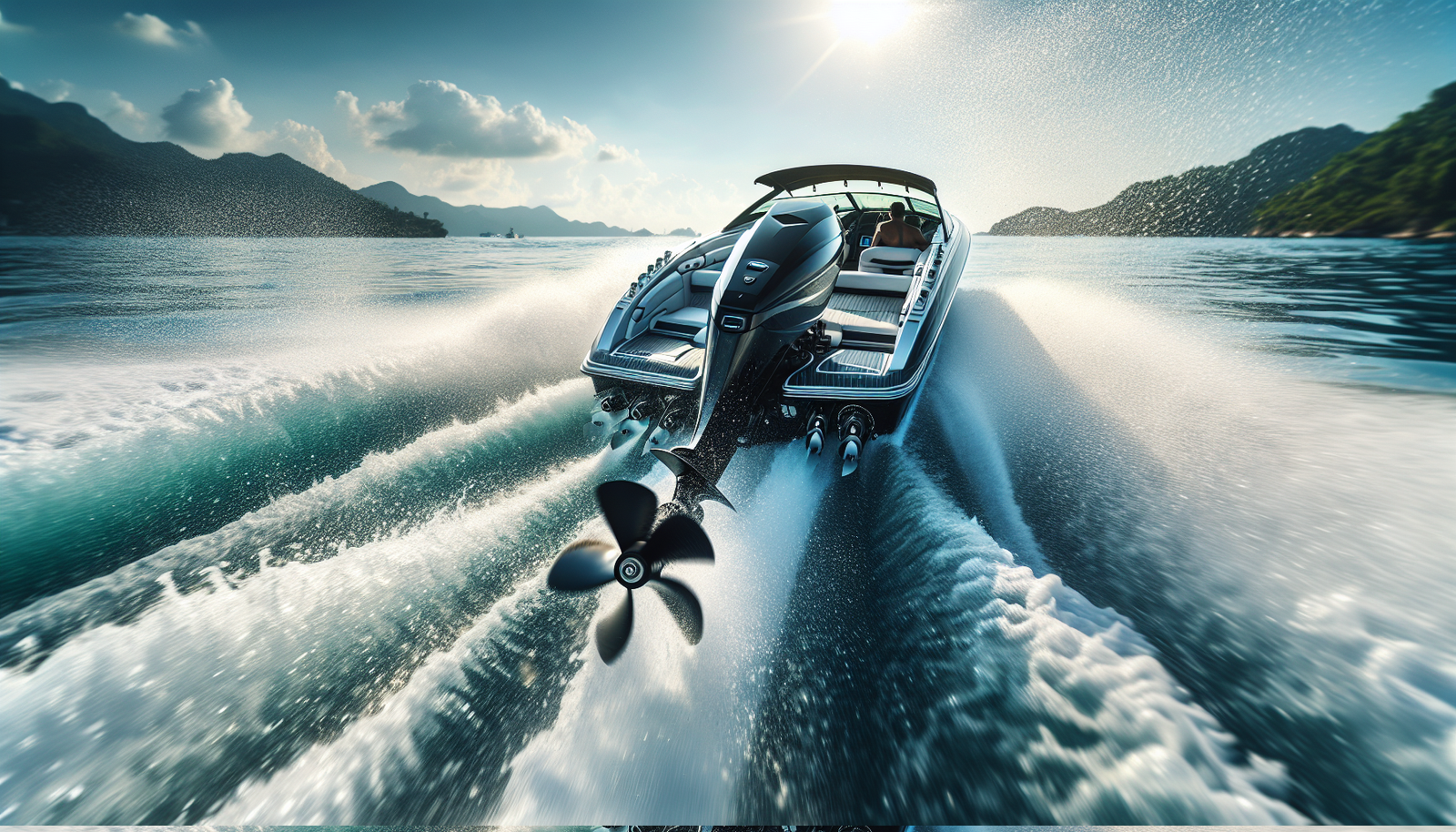Are you a watersport enthusiast looking to enhance your performance on the water? If so, you may be considering engine modifications to optimize your experience. In this article, we will guide you through the process of choosing the right engine mods for your watersports and recreational activities. Whether you enjoy jet skiing, wakeboarding, or simply cruising around the lake, we’ll help you navigate the world of engine modifications to find the perfect fit for your needs. So, grab your sunscreen and get ready to unleash the full potential of your watercraft!

Factors to Consider
When choosing an engine for your boat, there are several important factors to consider. These factors will heavily influence your overall boating experience and should be carefully thought out. Let’s explore each factor in detail to help you make an informed decision.
Power Requirements
The power requirements of your engine will depend on the type of boating activities you plan on doing. If you’re simply looking for a leisurely cruise, a smaller engine with less horsepower may be suitable. However, if you plan on engaging in watersports or need to navigate rough waters, you’ll likely require a more powerful engine. Understanding your power requirements is crucial to ensure your boat can handle the demands of your activities.
Weight and Balance
The weight and balance of your boat are important considerations when selecting an engine. A poorly balanced boat can lead to handling issues and reduced performance. It’s crucial to choose an engine that complements the weight and design of your boat to maintain stability and maneuverability. Manufacturers often provide weight limits and guidelines for compatible engines, so be sure to consult these specifications before making your decision.
Fuel Consumption
Fuel consumption is a significant factor to consider, as it directly impacts your boating costs and overall efficiency. Different engines consume fuel at varying rates, so it’s essential to assess your boating habits and budget. If you plan on spending long hours on the water, a fuel-efficient engine could save you money in the long run. Additionally, consider the availability and cost of the fuel type required by the engine, as this can vary depending on location.
Ease of Maintenance
Maintaining your engine is vital for its longevity and optimal performance. Easy access to the engine components and regular maintenance requirements should be taken into account when choosing an engine. Look for engines that offer user-friendly maintenance features, such as accessible oil filters, spark plugs, and belts. Engines with a reputation for reliability and durability may also require less frequent and costly repairs.
Noise and Emissions
Environmental considerations are crucial in today’s society, and boaters have a responsibility to minimize their impact on the environment. Noise and emissions are important factors to consider when selecting an engine. Regulations regarding noise levels and emissions vary by location, so be sure to research and comply with the standards in your area. Choosing engines with lower noise levels and reduced emissions not only benefits the environment but also enhances your overall boating experience.
Engine Types
Before delving into the specific factors associated with each engine type, it’s essential to have a basic understanding of the three main engine types commonly used in boating: outboard engines, inboard engines, and jet engines.
Outboard Engines
Outboard engines are the most popular and widely used engines in recreational boating. They are typically mounted on the transom of the boat and consist of an engine, gearbox, and propeller. Outboard engines offer several advantages, including easy installation, portability, and accessibility for maintenance. They also provide greater maneuverability and can be tilted out of the water when not in use.
Inboard Engines
Inboard engines, as the name suggests, are installed within the boat, usually in the center or rear section. These engines are connected to the propeller through a drive shaft and a gearbox. Inboard engines offer advantages such as improved weight distribution, reduced noise levels, and increased fuel capacity. They are commonly found in larger boats and are favored for their smooth and steady performance.
Jet Engines
Jet engines, also known as jet drives or waterjets, use a jet of water to propel the boat. These engines work by drawing water into the engine and then expelling it at high pressure through a nozzle at the rear of the boat. Jet engines offer excellent maneuverability and are often seen in smaller boats or those used in shallow waters. However, they typically have higher fuel consumption and may not be as fuel efficient as other engine types.

Outboard Engines
Outboard engines are versatile and suitable for various boating applications. Let’s explore some important considerations when choosing an outboard engine.
Power and Performance
The power and performance of an outboard engine are typically determined by its horsepower rating. Higher horsepower engines offer greater speed and acceleration, making them ideal for activities like waterskiing or wakeboarding. However, it’s essential to match the engine’s power to the size and weight of your boat to ensure optimal performance and safety.
Transom Height
The transom height refers to the distance between the top of the transom and the bottom of the boat. It’s crucial to choose an outboard engine with the appropriate transom height for your boat. Engines with adjustable transom brackets allow for fine-tuning the height, optimizing performance, and ensuring the propeller is fully submerged for efficient power transfer.
Shaft Length
Shaft length is an important consideration when selecting an outboard engine, as it determines the engine’s depth in the water. Engines with shorter shaft lengths are suitable for boats with lower transoms, while longer shaft lengths are necessary for boats with higher transoms. It’s crucial to choose a shaft length that provides proper submergence and prevents ventilation, which can cause a loss of power and poor performance.
Tiller vs. Remote Steering
Outboard engines can be operated through either tiller or remote steering systems. Tiller steering involves a handle attached directly to the engine and provides simple and direct control. This steering option is often preferred for smaller boats or those used in shallow waters. Remote steering systems, on the other hand, utilize a steering wheel and offer greater steering precision and control. Consider your boating preferences and the type of boat you have when deciding between tiller and remote steering.
Fuel Type and Efficiency
Outboard engines can run on different types of fuel, such as gasoline or diesel. Gasoline engines are more common and generally offer better performance, while diesel engines are known for their fuel efficiency and longevity. Choosing the fuel type that best suits your boating needs and budget is an important decision. Additionally, consider the engine’s fuel efficiency to ensure prolonged boating enjoyment without the need for frequent refueling.
Inboard Engines
Inboard engines offer specific advantages and considerations compared to outboard engines. Let’s delve into the factors to consider when selecting an inboard engine.
Power and Torque
Inboard engines are known for their power and torque, making them ideal for powering larger boats. The torque provided by inboard engines allows for better acceleration and the ability to handle heavy loads. However, it’s important to select an engine with an appropriate horsepower rating that matches the boat’s size and weight to achieve optimal performance and fuel efficiency.
Installation Space
Unlike outboard engines, inboard engines require a dedicated installation space within the boat. This consideration can be crucial, especially if you have limited space. It’s important to measure and assess the available space in your boat to ensure a proper fit and efficient installation. Some boats may require modifications or adaptations to accommodate the chosen inboard engine, so consult with a professional if necessary.
Propeller and Drive System
Inboard engines are coupled with a drive system and propeller to propel the boat. The propeller type, size, and pitch should be carefully chosen to match the engine’s power and the boat’s requirements. Consult with professionals or consult the engine manufacturer’s performance charts to determine the optimal propeller specifications. It’s also important to consider the type of drive system, such as a direct drive or a V-drive, depending on your boating activities and preferences.
Cooling System
Inboard engines require a cooling system to ensure proper temperature regulation and prevent overheating. There are two main types of cooling systems: raw water cooling and closed-loop cooling. Raw water cooling systems circulate water from the surrounding environment to cool the engine. Closed-loop cooling systems use a separate circuit and coolant to regulate engine temperature. Consider the type of cooling system that best suits your boating conditions and maintenance preferences.
Fuel System
The fuel system of an inboard engine should be chosen carefully to ensure efficient operation and longevity. Carbureted engines use a traditional fuel delivery system, while fuel-injected engines provide precise fuel metering and better performance. Fuel-injected engines are typically more fuel-efficient and offer smoother operation. Consider the advantages and disadvantages of each fuel system, as well as your budget and boating preferences, when selecting an inboard engine.

Jet Engines
Jet engines, although less commonly used, offer unique advantages and considerations. Let’s look at the important factors when considering a jet engine.
Thrust and Acceleration
Jet engines provide exceptional thrust and acceleration capabilities, making them ideal for water sports and applications that require quick maneuvering. Their design allows for instant response and enhanced control, providing an exhilarating boating experience. However, it’s important to note that jet engines may have lower top speeds compared to other engine types.
Intake System
The intake system of a jet engine plays a crucial role in its performance and efficiency. It’s important to choose a jet engine with a well-designed intake system that minimizes the risk of debris or foreign objects entering the engine. Additionally, consider the intake system’s filtration capabilities to ensure the engine remains protected and runs smoothly.
Impeller Design
The impeller is a key component of a jet engine, responsible for drawing water in and propelling the boat forward. Different impeller designs can affect performance, efficiency, and the engine’s ability to handle different water conditions. Consult with engine manufacturers or experts to select an impeller design that matches your boating needs and desired performance characteristics.
Steering and Maneuverability
Jet engines offer excellent steering and maneuverability due to their direct propulsion system. The absence of a propeller allows for enhanced control in shallow waters, tight turns, and quick stops. Jet engines are particularly well-suited for activities that require precise maneuvering, such as water skiing or navigating through narrow channels.
Maintenance Requirements
Like any engine, jet engines require regular maintenance to ensure optimal performance and longevity. It’s important to consider the ease of access to engine components and the availability of spare parts when choosing a jet engine. Additionally, consult with the manufacturer’s recommendations regarding maintenance intervals and requirements to properly plan for ongoing maintenance needs.
Power and Performance
Determining the power and performance requirements for your boat is crucial to select the right engine. Consider the following aspects when assessing your needs.
Assessing Your Needs
Assessing your needs involves considering the type of boating activities you plan on engaging in and the performance characteristics you desire. Do you want a high-speed boat capable of towing water skiers, or are you looking for a leisurely cruising experience? Understanding your needs and expectations will help guide your engine selection process.
Considering Horsepower Ratings
Horsepower ratings play a significant role in determining the engine’s power output. It’s important to select an engine with an appropriate horsepower rating that matches the size and weight of your boat. Choosing an engine with too little horsepower may result in sluggish performance, while an engine with excessive horsepower can be both costly and unnecessary.
Matching Engine and Boat Size
Properly matching the engine to the size of your boat is vital for optimal performance and safety. Large, heavy boats may require more powerful engines to achieve suitable speed and maneuverability, while smaller boats may be adequately powered by less horsepower. Consider the weight and dimensions of your boat when selecting an engine to ensure a proper match.
Understanding Torque
Torque is the twisting force produced by the engine and is essential for acceleration and overcoming resistance. Higher torque allows the boat to reach top speed more quickly and handle heavier loads. Understanding the torque characteristics of an engine can help you determine its ability to meet your performance requirements.

Fuel Efficiency and Economy
Fuel consumption and efficiency are critical considerations to keep boating costs under control and reduce environmental impact. Let’s explore the factors related to fuel efficiency.
Calculating Fuel Consumption
Calculating the fuel consumption of an engine involves understanding its fuel burn rate and the duration of your boating trips. Manufacturers often provide fuel consumption data at various speeds, allowing you to estimate the fuel requirements for specific boating activities. By knowing the fuel consumption, you can better plan for refueling and budgeting costs.
Comparing Fuel Types
Different engines can run on various fuel types, including gasoline, diesel, and alternative fuels. Each fuel type has its advantages and disadvantages, such as cost, availability, and environmental impact. Consider the availability and cost of the fuel type required by the engine in your area. Additionally, take into account any preferences you may have, such as personal beliefs regarding sustainable fuel options.
Considering 2-Stroke vs. 4-Stroke Engines
When evaluating fuel efficiency, it’s essential to consider the engine’s combustion cycle: 2-stroke or 4-stroke. 2-stroke engines tend to consume more fuel due to their design, which mixes fuel and oil together. 4-stroke engines separate fuel and oil, resulting in improved fuel efficiency. Consider the advantages and disadvantages of each cycle and balance them against your fuel efficiency requirements.
Evaluating Fuel Injection Systems
Fuel injection systems provide precise fuel delivery, resulting in better fuel efficiency and performance compared to traditional carbureted systems. Injecting fuel directly into the combustion chamber allows for better control and optimization. Consider engines equipped with fuel injection systems for improved fuel economy and smoother operation.
Compatibility with Boat Design
Ensuring compatibility between your chosen engine and your boat’s design is crucial for optimal performance and safety. Let’s examine the factors related to boat design compatibility.
Weight Distribution and Balance
The weight distribution and balance of your boat are important considerations when choosing an engine. Engines that are too heavy for the boat can result in poor handling, reduced stability, and increased fuel consumption. Consult the manufacturer’s guidelines and specifications to ensure the chosen engine is compatible with your boat’s weight distribution and balance requirements.
Mounting and Installation Requirements
Different engines have specific mounting and installation requirements. It’s crucial to select an engine that can be properly mounted within your boat’s designated installation space. Consider the dimensions, weight, and structural modifications necessary to accommodate the chosen engine. If necessary, consult the engine manufacturer or a professional for guidance on proper installation.
Optimal Transom Height
The transom height plays a crucial role in the performance and efficiency of your boat. Engines with adjustable transom mounts allow for fine-tuning the height to optimize performance. It’s important to consider the boat’s design and the specific activities you plan on engaging in when determining the optimal transom height for your engine.
Matching Drive System and Propeller
The drive system and propeller work in conjunction to propel the boat through the water. Properly matching the drive system and propeller to the engine is crucial for maximum efficiency and performance. Consult the engine manufacturer’s performance charts or seek professional advice to select the appropriate drive system and propeller for your boat.

Noise and Emissions
Environmental concerns and adherence to regulations are becoming increasingly important in boating. Consider the following factors when selecting an engine with minimal noise and emissions.
Complying with Regulations
Noise and emission regulations vary by location, so it’s important to research and comply with the specific standards in your area. Ensure the engine you choose adheres to the noise and emission limits imposed by regulatory bodies. Compliance will not only keep you within the law but also contribute to a more enjoyable and eco-friendly boating experience.
Understanding Noise Levels
Noise levels can significantly impact your boating experience and the comfort of those around you. Engines with lower noise levels reduce noise pollution and enable effortless conversation among passengers. Consider the noise levels of different engine models and choose one that aligns with your desire for a peaceful and enjoyable boating experience.
Environmental Impact and Emission Standards
Reducing your carbon footprint and minimizing environmental impact are essential considerations in today’s world. Engines that meet stricter emission standards contribute to cleaner air and waterways. Consider engines that comply with or exceed emission standards to ensure you’re doing your part to protect the environment for future generations to enjoy.
Choosing Environmentally Friendly Options
Advancements in engine technology have led to the development of more environmentally friendly options. Electric and hybrid engines, for example, produce zero or reduced emissions and offer quieter operation. While they may not be suitable for all boating applications, considering these environmentally friendly options demonstrates a commitment to sustainability and conservation.
Maintenance and Longevity
Maintaining your engine is crucial for its longevity and continued performance. Consider the following factors when evaluating maintenance requirements.
Ease of Access for Maintenance
Engines that offer easy access to components simplify routine maintenance tasks. Consider engines with user-friendly designs that facilitate oil changes, filter replacements, and belt adjustments. The ability to perform basic maintenance tasks without the need for extensive disassembly or specialized tools can save you time and money in the long run.
Availability and Cost of Spare Parts
Ensuring the availability and affordability of spare parts is essential for ongoing maintenance and repairs. Choose engines from reputable manufacturers with established service networks, as this increases the likelihood of access to genuine spare parts. Additionally, consider the cost of spare parts when comparing different engine models, as this can impact your long-term maintenance budget.
Regular Maintenance Requirements
Engines require regular maintenance to ensure optimal performance, reliability, and longevity. Familiarize yourself with the recommended maintenance intervals, such as oil changes, spark plug replacements, and filter cleanings. Maintenance requirements can vary depending on the engine type and manufacturer, so consult the engine’s owner’s manual for specific guidance.
Warranty and Support
Engines with comprehensive warranties provide peace of mind and protection against manufacturing defects. Consider the length and scope of the warranty when comparing different engine options. Additionally, evaluate the availability of customer support and service centers, as responsive support can greatly enhance your boating experience, especially in the event of technical issues or repairs.
In conclusion, choosing the right engine for your boat is a critical decision that deserves careful consideration. By evaluating factors such as power requirements, weight and balance, fuel consumption, ease of maintenance, noise and emissions, boat compatibility, and maintenance requirements, you can make an informed decision that ensures an enjoyable and efficient boating experience.

